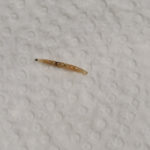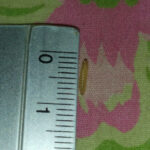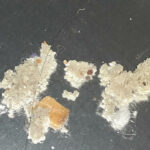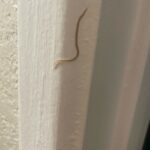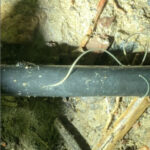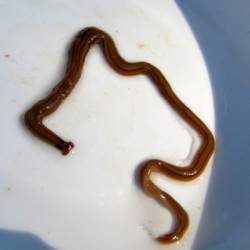As small and simple looking as they are, worms are among some of the most complex and amazing creatures on the planet. Earthworms, the world’s largest group of worms, are necessary for the survival of earth’s plants and trees. A sizable portion of the more than 2,700 different species of earthworm help plants and trees grow by aerating the soil. They do this by digging tunnels in the soil, which allows air to get to the plant roots. Worms also eat organic matter, digest it, and excrete the digested material. This digested material is called “castings.” The castings are rich with phosphorus, calcium, and potassium. Worm castings are ten times richer in nutrients than commercial topsoil; so many gardeners and farmers use the composting method alone to fertilize plants and crops. Worm castings also help create channels within the layers of the earth’s soil, which helps to hold water better and keep moisture in the soil longer. Sounds pretty amazing huh? Well there is another worm that, while it doesn’t aerate the soil, it secretes a tough substance that just might surprise you and most construction workers.
Worms called gastrotrichs have bodies covered with tiny tubes that secrete a cement. The cement tubes make it appear as though the worm is carrying a case filled with sand! Gastrotrichs belong to the phylum gastrotricha. These tenpin-shaped ciliated worms are made up of 13 families and they all have cuticular adhesive tubes. While gastrotrichs do not inhabit and enrich the earth’s soil, they do live in sandy areas and beaches helping to prevent decay and odor by consuming debris in the surrounding area and water.
Another type of creature that appears to be carrying a case filled with sand is the larvae of caddisflies. The larvae can be found in a wide range of habitats such as ponds, lakes, springs, and streams. Many species have the ability to make protective cases made of silk. The larvae covers the protective case with twigs, gravel or sand. Also called sedge-files and rail flies, the adult caddisfly is also a case-maker. It makes a portable case of silk mixed with plants, rock, twigs or sand. In some cases, the caddisfly uses silk alone to create its case, but for the most part, the creature covers it with sand or other debris. Over time, the caddisfly case grows, giving the caddisfly the appearance of a bagworm.
The adult stage of caddisflies typically lasts only 1-2 weeks. In some cases, it can last for 2 months. Most adults are non-feeding and are equipped mainly to mate. The female caddisfly will lay her eggs anywhere below or above the water surface. She uses a gelatinous substance to enclose and attach the eggs to the surface. It can take up to three weeks for the eggs to hatch, sometimes sooner. In general, Caddisflies will complete their lifecycles in one year.
All About Worms is always free, always reader-supported. Your tips via CashApp, Venmo, or Paypal are appreciated! Receipts will come from ISIPP Publishing.




